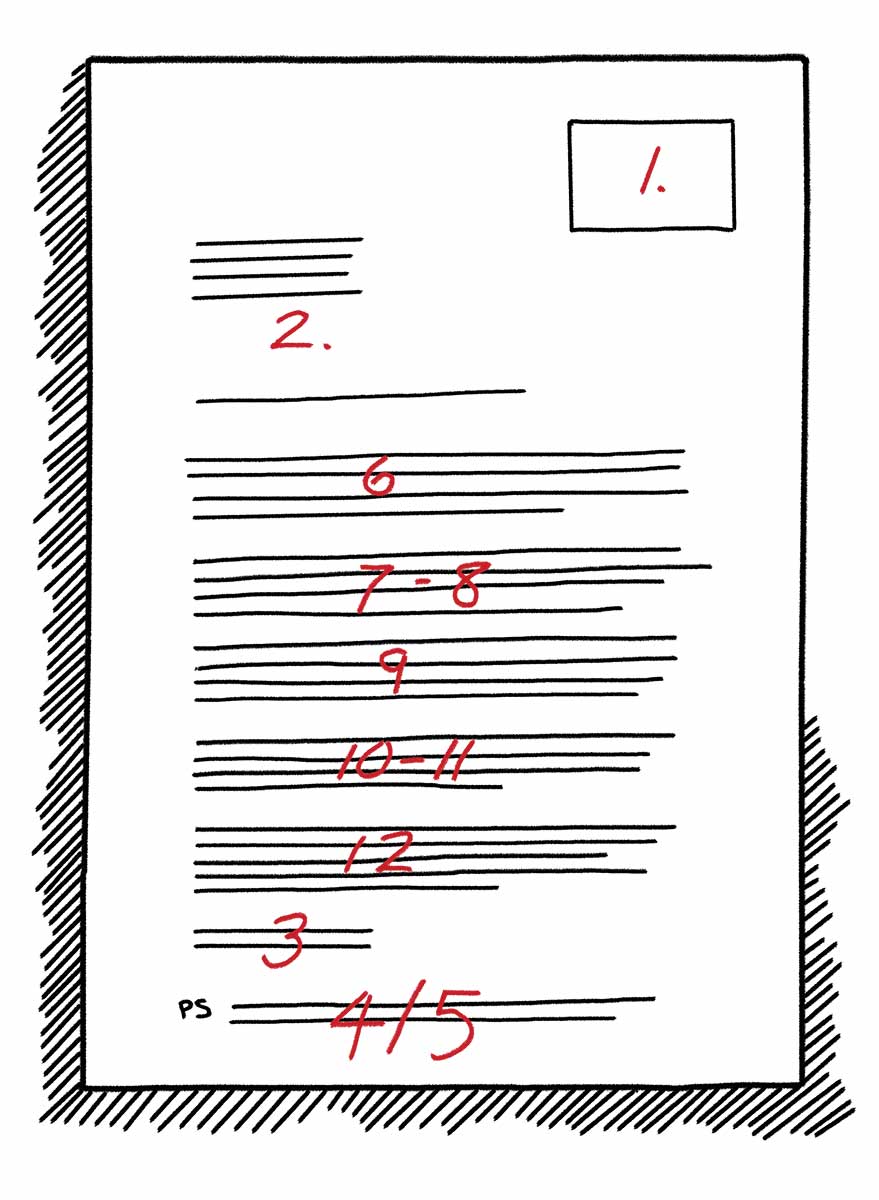The Reading Curve
The reader glances at the logo and date first, looks at the address block and salutation next, and then skips straight to the end of the letter to look at the signature and signatory. This path is called the reading curve.

W hen it comes to understanding direct mail, no one has been more influential than Siegfried Voegele, who literally wrote an entire book on the subject in the 1970s. Even today, his insights into how the consumer interacts with direct mail prove to be a timeless primer for educating marketing students and helping writers execute successful direct mail copywriting.
Voegele explains that the most important facet of a direct mail package is the letter. More than inserts, response forms, and incentives, the letter is a personalized way of engaging the consumer and establishing a connection to your brand, organization, or product. How do you ensure consumers read your letter, though? Here, Voegele provides some timeless tips.
Understanding the Reading Curve
Voegele unpacks what’s known as the reading curve. Readers don’t read direct mail letters straight from beginning to end. Instead, they glance at the salutation and date and then glance straight down to the signature.
Unconsciously, readers are wondering who is writing to them, what the sender wants, and why it’s important. To that end, using a direct form of address rather than a generic “Dear Neighbor” will help pull readers in, along with signing the letter with a person’s name rather than the company’s name. (Tip: the signature should be printed in bright blue to match what you would expect to see in a personal letter, 70 percent of which are signed in blue ink.)
While the reader is at the bottom of the page, the first thing he or she will read is a PS. For this reason, a PS is crucial to a direct mail letter’s success. Voegele found that 90 percent of readers read a PS word for word, and the content of the PS will determine whether or not the body of the letter gets more than a cursory glance.
According to Voegele, the PS should be two to three lines long and should directly state the benefits, offer, discount, or emotional reward presented in the letter, along with the desired call to action. Once the reader knows what is at stake, he or she will go back to the top and read the letter in full.
Answering the Unspoken Questions
Once the recipient decides to actually read your letter, you must provide the answers to what Voegele calls the “unspoken questions”: What are the benefits of answering the call to action? How will the reader experience those benefits? What are the next steps? The benefits might be what your product or service does, a special offer you are presenting, or how the reader’s donation will help the charitable organization. Whatever the benefits, clearly enumerate them early on.
How the recipient experiences those benefits can come from testimonials or comparisons, which can be quickly alluded to in the letter and further explained in an insert. It’s more important that you quickly answer the third unspoken question and clearly state the call to action. Whatever the response mechanism is, it should be immediately identifiable and easy to use.
Signposts along the Reading Curve
While answering these questions, your letter should seek to capture attention as the readers make their way through the curve. To that end, layout is important. Voegele suggests short paragraphs of three to six lines each, as large blocks of text come across as a chore.
Voegele also found that the reader’s eye will fall on certain graphic elements, which can also serve as signposts to help guide the reader through the content. Be sure to use the following:
- Single-line headers or subparagraphs
- Underlined or bold sentences or phrases
- Indented paragraphs
- Words at the end of paragraphs that spill over to the next lines (In other words, never right justify.)
Every reader’s eye will fall on these signposts, whether or not he or she carefully reads your letter in full. Use them for emphasis and to highlight the answers to those unspoken questions.
Even 40 or so years later, Voegele’s insights into reader behavior are considered the Holy Grail for marketers using letters as part of their direct mail.







